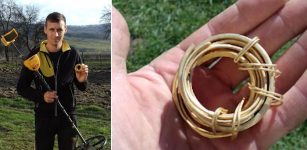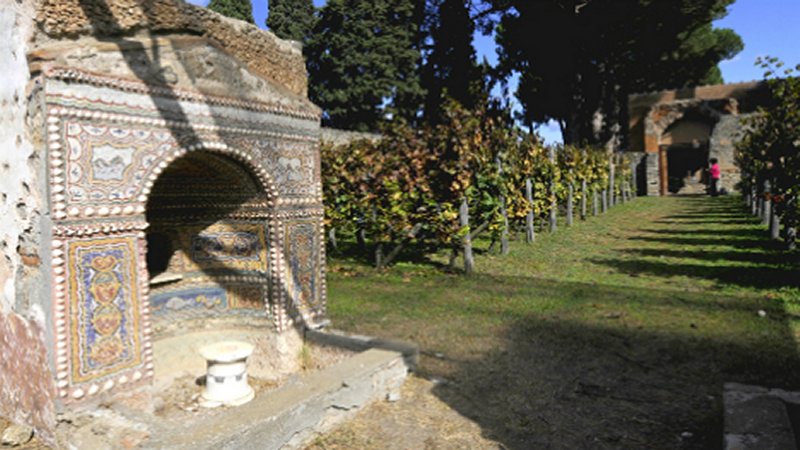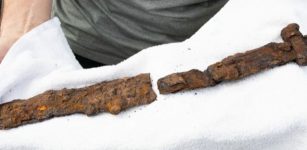Possibly World’s Oldest Gold Artifact Discovered In Bulgaria
MessageToEagle.com – This tiny artifact measures only 4 mm (1/8 inch) in diameter and might not look too exciting at first glance, but it’s a major discovery. Archaeologists think it could be Europe’s and possibly the world’s oldest gold artifact ever found.
The small bead was discovered at a pre-historic settlement in southern Bulgaria. It dates back to 4,500-4,600 B.C., , making it some 200 years older than jewellery from a Copper Age necropolis in the Bulgarian Black Sea city of Varna, the oldest processed gold previously unearthed, in 1972.
“I have no doubt that it is older than the Varna gold,” Yavor Boyadzhiev, associated professor at the Bulgarian Academy of Science, said.
“It’s a really important discovery. It is a tiny piece of gold but big enough to find its place in history.”
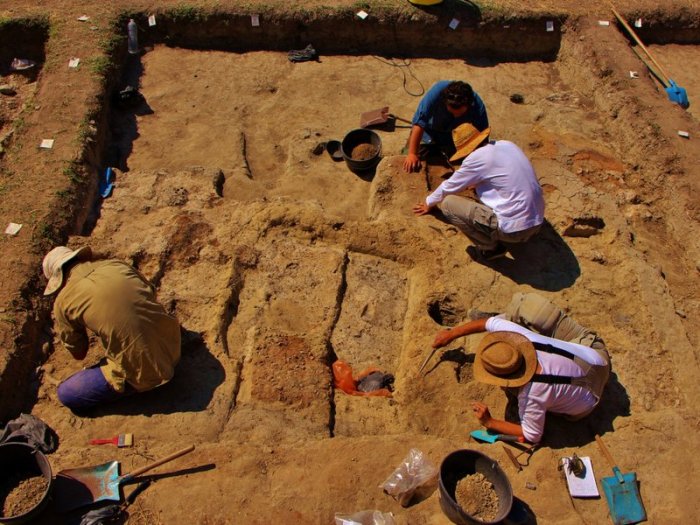
It is likely that the bead was produced at the site, just outside the modern town of Pazardzhik, which was the first “urban” settlement in Europe, peopled by “a highly-cultured society” which moved there from Anatolia, in today’s Turkey, around 6,000 B.C.
“I would say it is a prototype of a modern town, though we can say what we have here is an ancient town, judged by Mesopotamian standards,” Boyadzhiev said.
See also:
Discovery Made In Ancient Tomb – Six Golden Pages Of The Oldest Book In The History Of Mankind
Pyrgi Gold Tablets: A Rare Ancient Bilingual Treasure
Amazing Discovery Of 29 Ancient Gold Men Unearthed In Sweden
“But we are talking about a place which preceded Sumer by more than 1,000 years,” he added, referring to what is usually considered the first urban civilization, based in southern Mesopotamia, modern day Iraq.
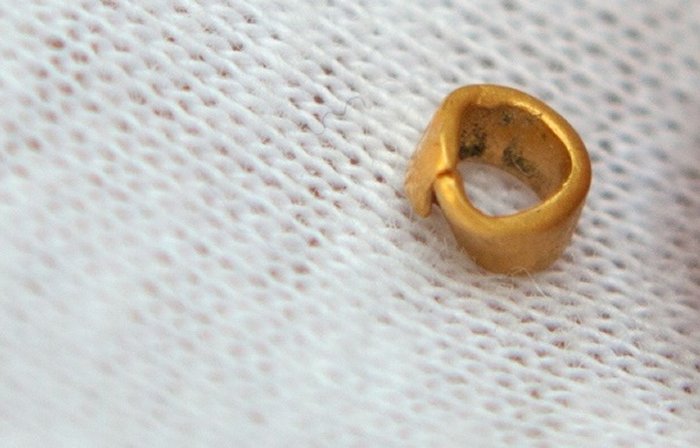
The gold bead, weighing 15 centigrams (0.005 ounce), was dug up in the remains of a small house that would have stood at a time when metals such as copper and gold were being used for a first time.
More than 150 ceramic figures of birds have been found at the site, indicating the animal was probably worshipped by the town’s people. The settlement was destroyed by hostile tribes who invaded from the north-east around 4,100 B.C.
The bead will be exhibited in the historical museum in Pazardzhik once it has been thoroughly analyzed and its age confirmed, a museum worker said.
MessageToEagle.com

